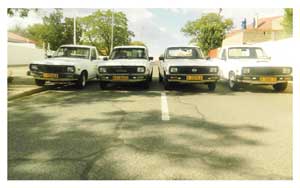
Datsun comes back

The ubiquitous Datsun bakkie carried the Nissan assembly plant in Rosslyn, South Africa, through its most difficult times in the 1980’s. At one point, it was the only profitable model to come off the assembly line. Starting out as a Datsun 1200 in the early seventies, this sturdy little carrier has established a reputation over many decades for affordability, reliability and ease of maintenance. Although it later became the Nissan 1400, its popular image remained that of the small Datsun bakkie.
This follows a global decision in 2010 to re-introduce the Datsun brand as part of the company’s ambitious Nissan Power 88 mid-term plan to achieve 8% of the global market share and 8% operating profit by fiscal year 2016.
“The return of Datsun is integral to our expansion in fast-growing markets where there is a mushrooming upwardly-mobile segment,” said Vincent Cobee, corporate vice president at Nissan Motor Co., Ltd. “Datsun’s key values – accessible, reliable and modern – are designed to accommodate the needs and aspirations of this target group, just as it did for similarly optimistic customers in Japan, America and a large part of the world during most of the 20th century.”
The Datsun brand was phased out in 1981 when it was integrated with Nissan branding as the company expanded globally. Datsun is to be re-established with a strong independent brand identity, alongside the Nissan and Infiniti brands.
“Following Infiniti’s launch last year, we are delighted that Southern Africa is also a destination of choice for the Datsun brand,” said Mike Whitfield, managing director of NSA. “Datsun enjoyed a proud heritage in the region after the Bluebird made its debut at the Pretoria Show in 1958, the 120Y and SSS models were household names, before going on to become the number one brand between 1976 and 1978.”
Datsun History
Datsun originated in Japan as DAT-GO (the DAT-car) almost a century ago in 1914. The word DAT means ‘lightning-fast’ in Japanese but is also a reference to the three financiers who supported the business at the time – namely Messrs. Den, Aoyama and Takeuchi – an acronym of the first letter of each name. Using the same logic, it was promoted as Durable, Attractive and Trustworthy, or DAT for short.
In 1933, Nissan’s founding father Yoshisuke Aikawa took over the business with a vision of “mobility for all”. The introduction of a light-weight, economical yet resilient car to meet the aspirations of young Japanese people in the early 1930s was named the ‘son of DAT’ – Datson – which later changed to Datsun. Local engineering and mass-production made the founder’s dream a reality.











































